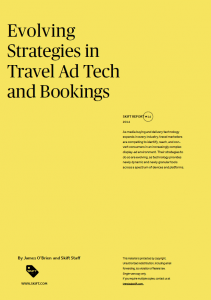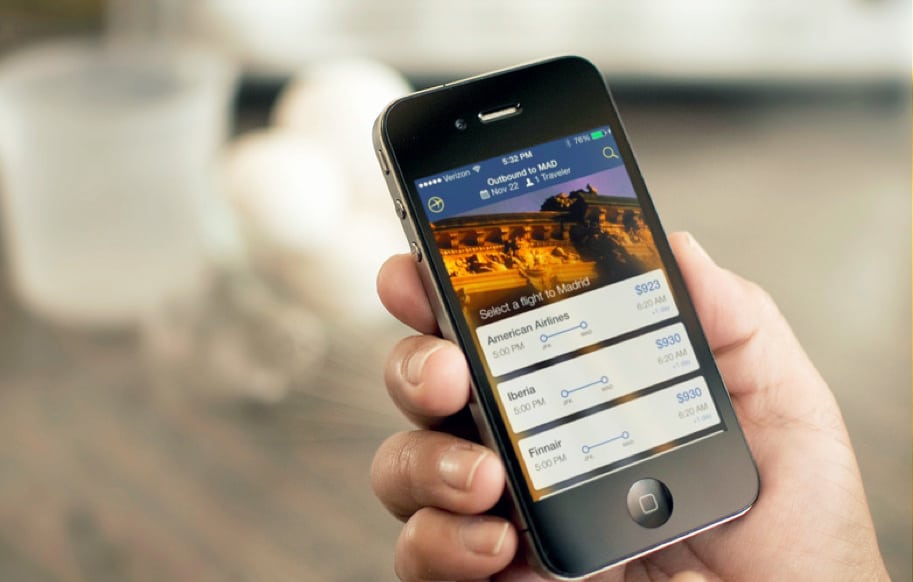Skift Take
It is about showing somebody an ad in the exact right timeframe, and for the exact right product, in the place that they want to go. Get the report, get deeper insights into travel booking tech.
Last week we launched our latest Skift Trends Report “Evolving Strategies in Travel Ad Tech and Bookings“, examining the online advertising technology driving bookings in an increasingly complex display-ad environment. Below is a short extract from it, get this definitive report on how ad tech is changing the future of online booking in travel.
 A survey conducted in fall 2013 showed that 85% of advertisers employ programmatic strategies. Within that context, programmatic media buying is expected
A survey conducted in fall 2013 showed that 85% of advertisers employ programmatic strategies. Within that context, programmatic media buying is expected
to accelerate. Recent reports suggest that its compound annual growth rate through 2016 will be in the neighborhood of 59%. And while the data driving programmatic isn’t new, what travel can do with it — newly linking together different kinds of information — is rapidly evolving as well.
Data streams: the programmatic paradigm
Stemming from the industry’s longtime commitment to search marketing, travel
has had two key data streams in place for years: its in-house collection of consumer behaviors and purchases, and its ability to collect information about what customers look at when they browse. As recently as 2009, travel has been able to compare preferred inventory sources with preferred data sources, and that analysis has helped leaders steer efforts to target customers with more elegance — if not with greater ease.
The complexity of the online ad space is growing rapidly, especially among the top 10% of publishers. And the impact of travel’s increasing investment in programmatic is making it a more competitive space. A recent study shows that travel professionals have become 57% more competitive as they adopt data-driven predictions into their campaigns.
The challenge is how to recognize key pat- terns that help drive conversions. Massive quantities of newly connectible data require efficient and accurate applications if they’re to make money for brands. The pre-programmatic online paradigm was seldom —and perhaps never — at its roots proactive: it was about responding to search, rather than predicting what a consumer would want to do next.
“There is a paradigm shift going on, for sure,” said Brad King, VP of sales for Sojern. “One that is about being super-proactive in marketing to people, and marketing to them in a way that you know the relevance of it to them is going to be so much better than it ever has been in the past.
“Travel has been good at contextual targeting, and UGC was a great way to get more people involved, but to me what’s really changed is that none of it really leant itself to people who are ultimately showing you intent to travel,” he said. “This concept of now being able to capture intent is massive. You literally, now, have a mechanism to stop going around targeting only proxies.”
By proxies, King is referring to a familiar form of buying prospects. Ad buyers select a set of demographic details they assess to be associated with existing types of clientele — at a hotel it might be males older than 50, associated with certain businesses or travel schedules — and then push ads and offers to those prospects via the purchased data, tailoring the message to the demographic parameters.
“All of this is allowing us to move from proxies to people,” King said. “It’s one-to one marketing. It’s still not perfect, it’s not one-to-one marketing nirvana, but it’s showing somebody an ad in the exact right timeframe, and for the exact right product, in the place that they want to go. It’s just something that we weren’t able to do two years ago.”
Get this definitive report on how ad tech is changing the future of online booking in travel.
The Daily Newsletter
Our daily coverage of the global travel industry. Written by editors and analysts from across Skift’s brands.
Have a confidential tip for Skift? Get in touch
